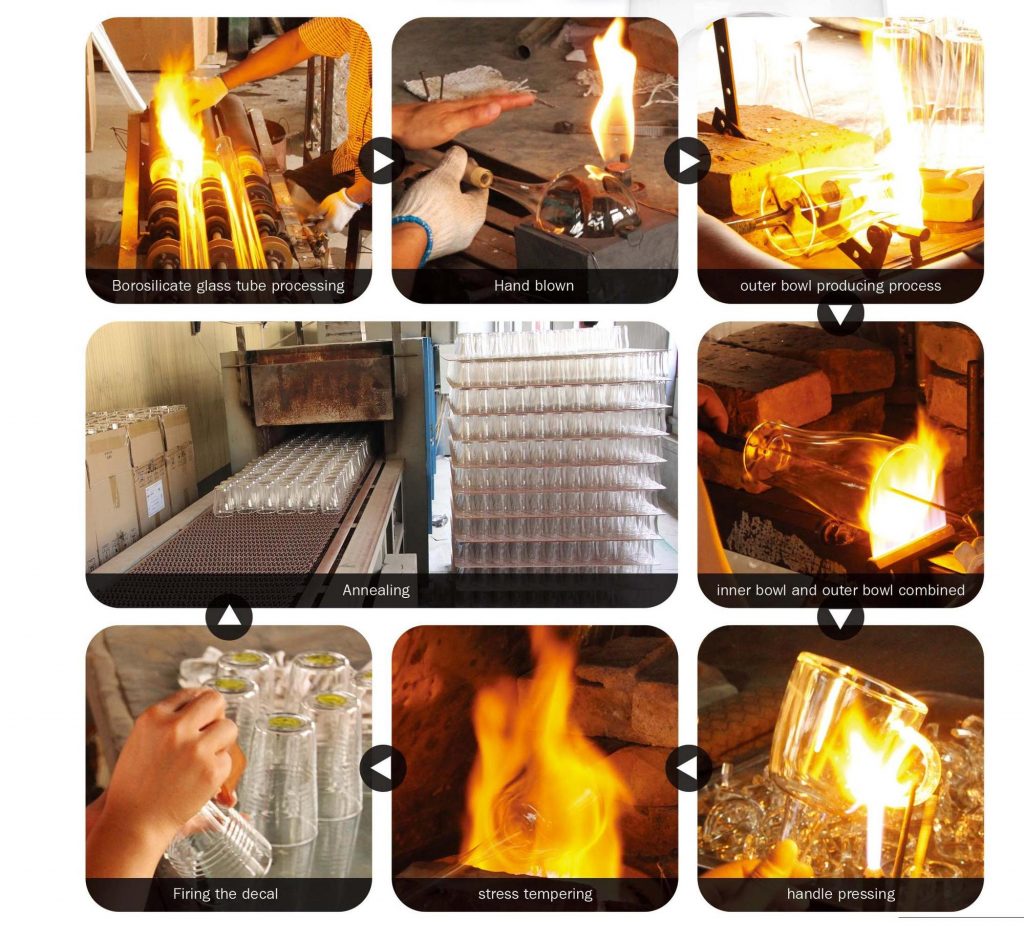Put the powder and clinker blended according to the glass composition into a crucible kiln or a pool kiln (see glass melting kiln) for melting. After melting, it will be clarified into a uniform, bubble-free, stone-free, and streak-free glass liquid, and then cooled to adapt to the corresponding Various molding operations can be performed in the viscosity range required by the molding method.
Blow molding
There are two methods of manual and mechanical blow molding. In manual molding, a hand-held blowpipe picks up the material from the crucible or the kiln’s reclaimer, and blows it into a tool shape in an iron or wooden mold. For smooth round products, use the rotary blowing method; for products with convex-concave patterns or non-circular shapes on the surface, use the static blowing method. Firstly, the colorless material is selected and blown into small bubbles, and then the small bubble is used to pick the colored material or the milky material into the shape of a device, which is called nest blowing. Dip the color fusible material particles on the opacified jacket material, and the natural melt flow of various colors can be blown into natural scenery utensils; when the color material is moistened with ribbon-shaped opacifying materials, it can be blown into wire drawing utensils. Mechanical molding is used to blow large quantities of products. After receiving the material, the blow molding machine automatically closes the iron mold and blows it into a vessel shape. After demolding, remove the cap to form a vessel. Pressure-blow molding can also be used, in which the material is first washed into small bubbles (prototypes), and then blown into a device shape. It has higher blowing efficiency and better quality than simply using a blowing machine.
Pressing moulding
In manual molding, the material is manually picked and cut into the iron mold, the punch is driven, pressed into the shape of a device, and the fixed shape is demolded. Mechanical molding is automated production, with large batches and high efficiency. Compression molding is suitable for small-shaped products such as cups, plates, ashtrays, etc. that can withdraw from the punch.
Centrifugal molding
The material is received in the rotating mold, and the centrifugal force generated by the rotation causes the glass to unfold and close to the mold, and then take it out after solidifying the mold. It is suitable for forming large glassware with uniform walls.
Free moulding
Also known as dieless molding. Manual picking is used to repeatedly bake and modify or thermally bond before the kiln. Since it is not in contact with the mold, the surface of the glass is bright, and the shape and lines of the product are smooth. Manufactured products are also called kiln glass products.


